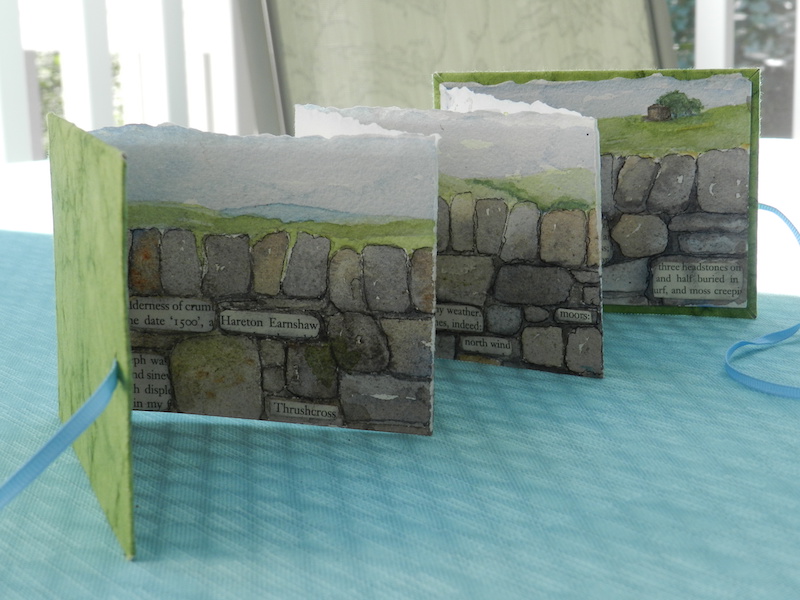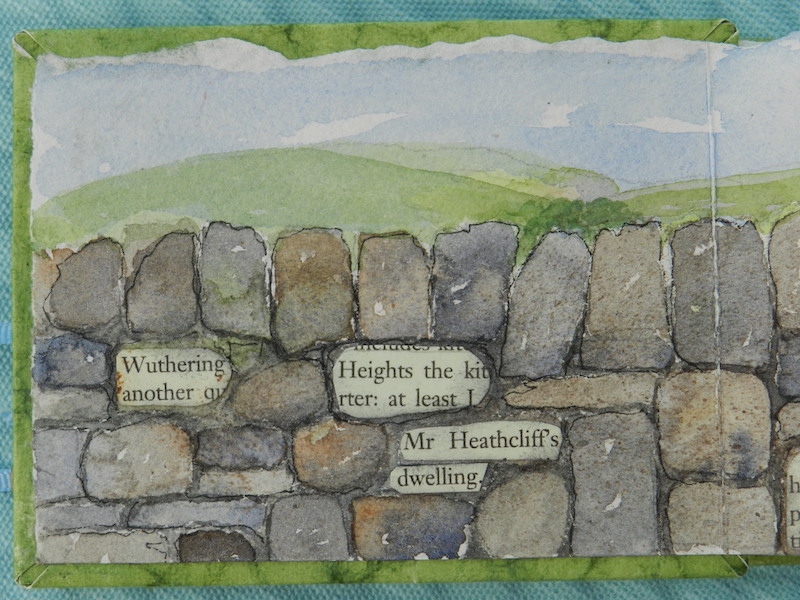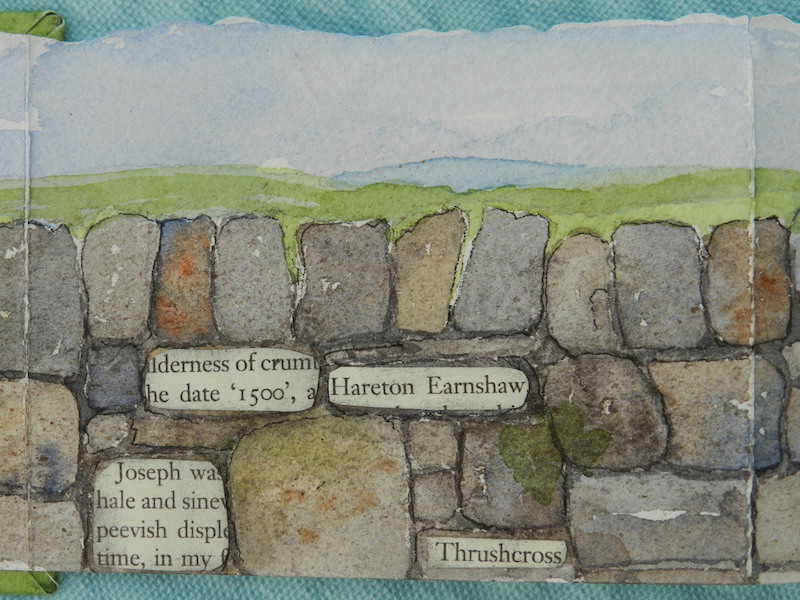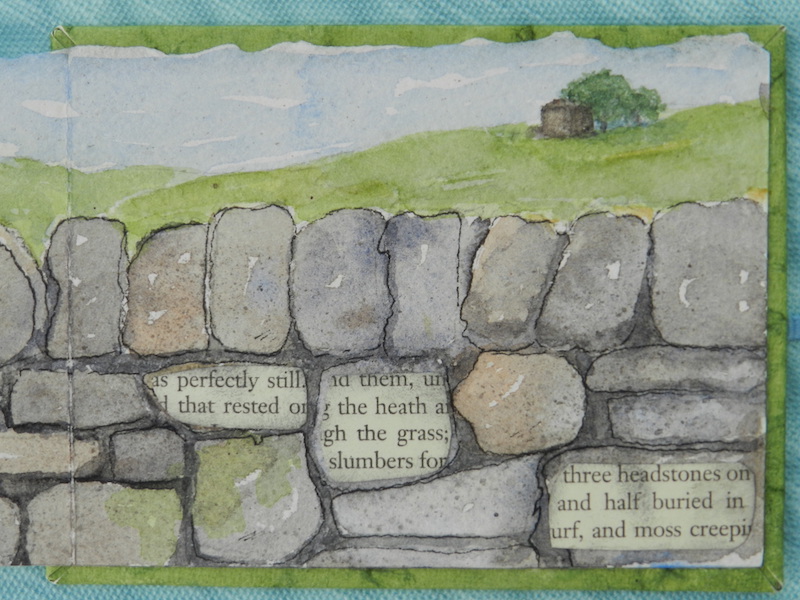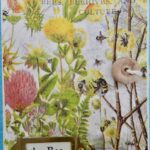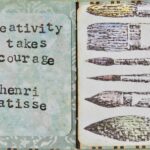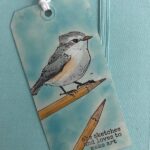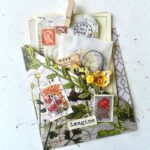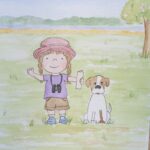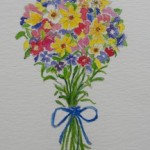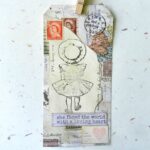A Natural Influence: Nature and the Brontë Sisters, Part One
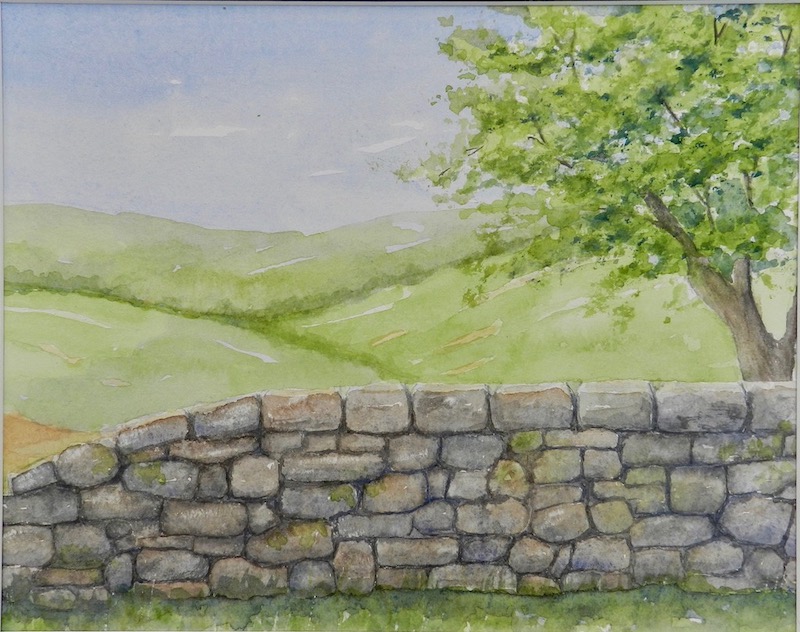
Part 1: Walking the Brontë Way
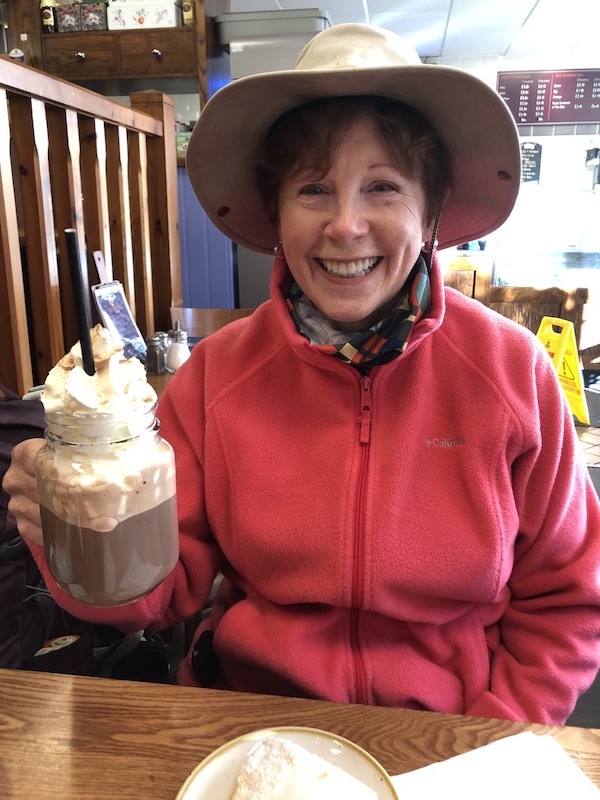
I know as Clay and I step off the bus, that I want to remember everything about this early October day, starting with breakfast in the bakery (hot chocolate and pastries). We will need this energy for our long hike that begins here in the West Yorkshire village of Haworth, once home to the Brontë family.
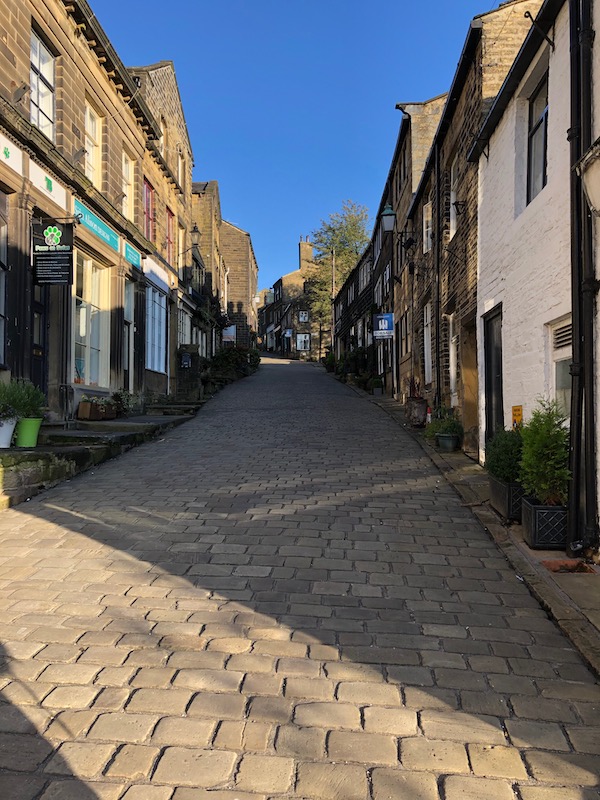
Excited to see the moors, we leave the bakery behind, walking past old stone buildings huddled along the cobbled mainstreet – the Brontë parsonage (now a museum), the churchyard and cemetery – then step onto the tree-lined stone path that will lead us along the Brontë Way and further up, onto Haworth Moor. My hiking poles set a rhythm, occasionally interrupted as I stop to remind myself – that yes, Charlotte, Emily, and Anne walked this path often, and in all kinds of weather. Today, the sun illuminates the green-gold hills ahead, dotted with the fading magenta of late-blooming heather.
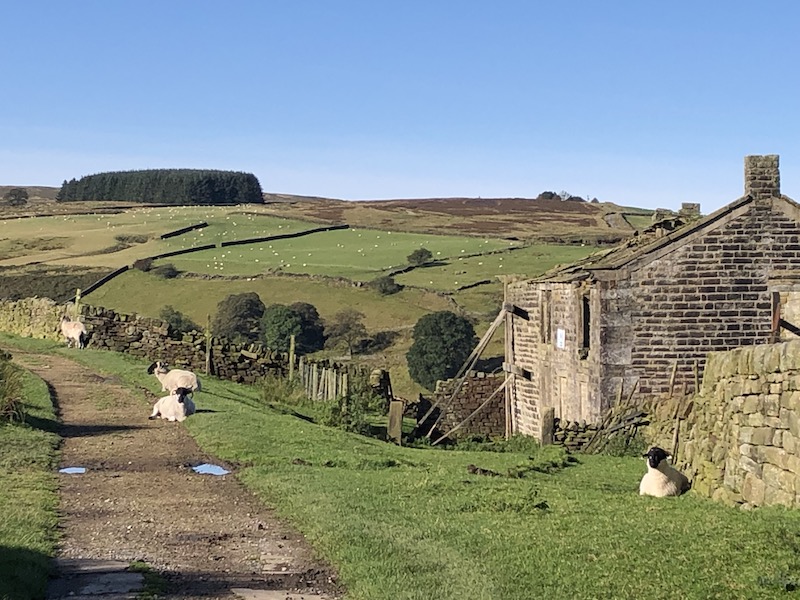
After leaving the village, I am overwhelmed by the vastness of the landscape that stretches out ahead. It’s as though I have walked into an English watercolor, complete with moss-topped drystone walls, old farmhouses, and sheep on the hills (and path). I can understand how this setting influenced the Brontë’s and their writing and art. I too, am inspired, but my journal will have to wait for a few miles.
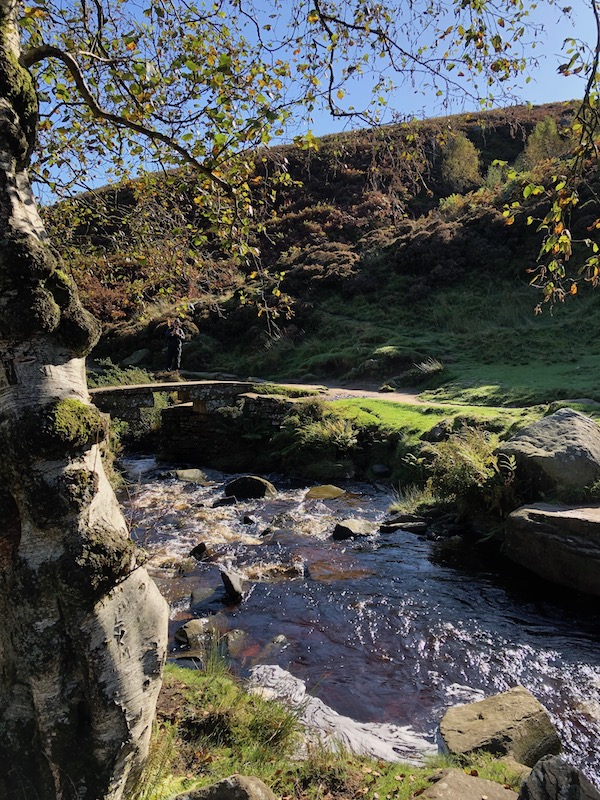
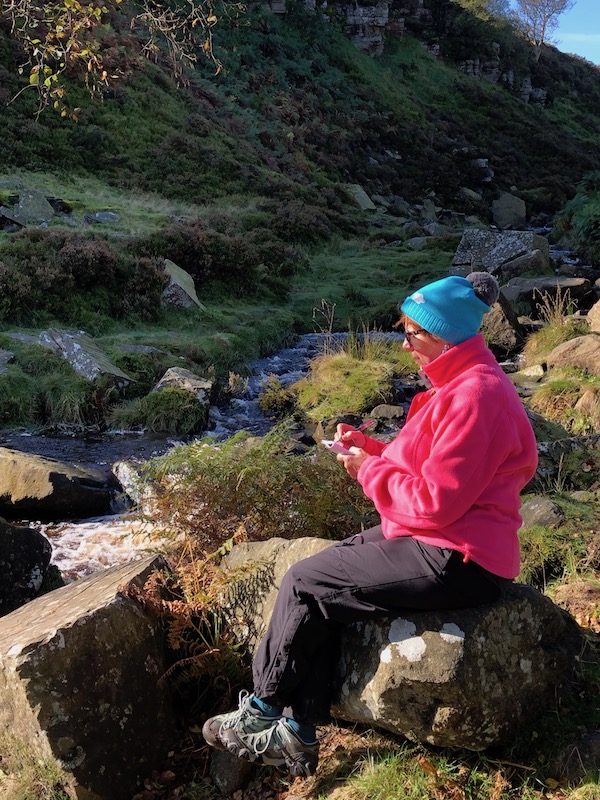
over ancient, mottled stones
riffles sparkle in sunlight.
Sacred space, this place
where sisters sat listening,
nature inspired.
Backpacks on, we rejoin the path heading up to Top Withens, farmhouse ruins said to have been the inspiration for the Earnshaw family house in Charlotte Brontë’s Wuthering Heights. Along the paths this morning, I have noticed that the wooden trail signs are in both English and Japanese and decide to find out more about this. (Later, at the Brontë Museum, I learned that Japan has a century-old love affair with Emily Brontë’s enigmatic novel. So much so, that the book has been transformed into versions for all ages and interests. Thousands of Japanese fans visit here each year.)
Clay and I continue onward and upward (definitely upward) to Top Withens, now walking on the popular Penine Way, a 268-mile National Trail stretching from the Peak District north to just inside the Scottish border. As the trail takes a turn, we see ruins and what appears to be a small group of trees, still in the distance. We finally reach the top – Top Withins – drop our backpacks, and take in the incredible landscape. It is otherworldly – difficult to adequately describe in its austere beauty. I am smitten. I want to absorb this moment, this place.
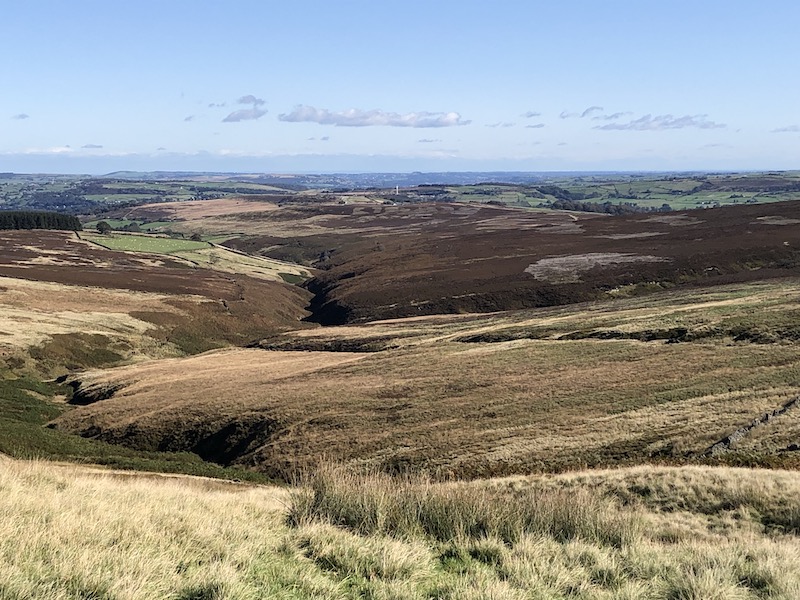
in their verdant, hilly laps
hikers walk to read.
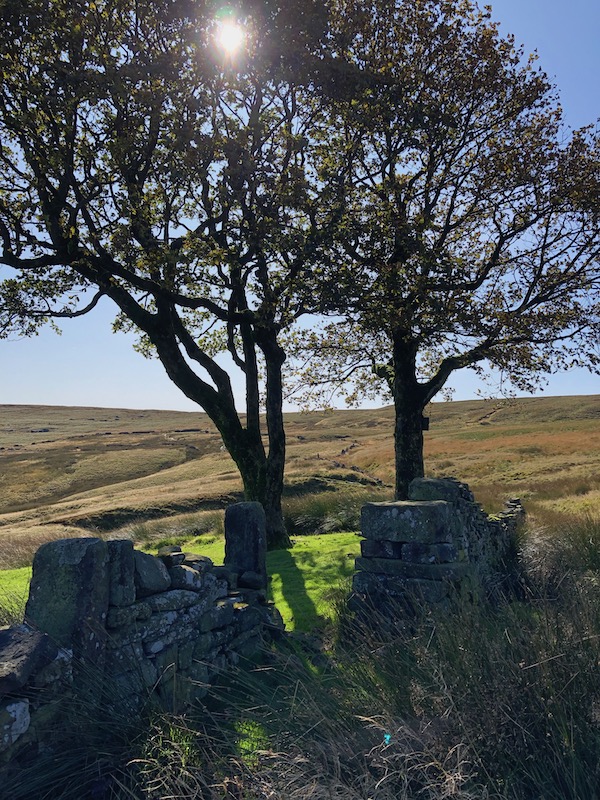
Top Withens is the site of an Elizabethan farmhouse, High Withens. Abandoned even during the Brontë’s time, it was suggested by Ellen Nussey, Charlotte’s closest friend, that this was the original site for Wuthering Heights. Some original stones remain, now preserved by newer surrounding walls. The word “withins” comes from the Yorkshire word “whither”, “wither”, or “wuther”, meaning tremble or shake. Related to the winds on the moors, it can mean “bluster” or “rage”. A fitting description of the tumultuous tale by Emily Brontë. But today, we enjoy a sunny, though chilly day, eating our lunch near the only trees in the area – two windswept sycamores. One could imagine on a dark stormy night, that these arboreal sentries might resemble Cathy and Heathcliff, their dark cloaked figures leaning into the wild Yorkshire wind.
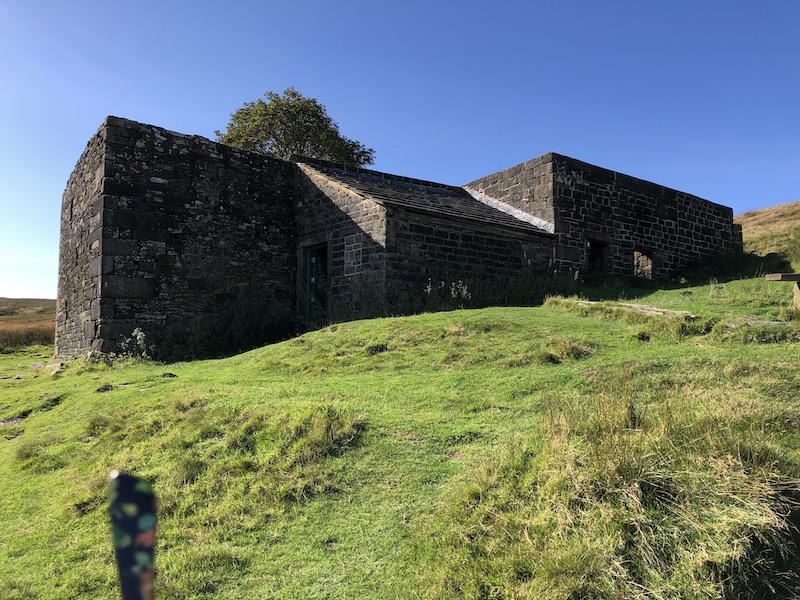
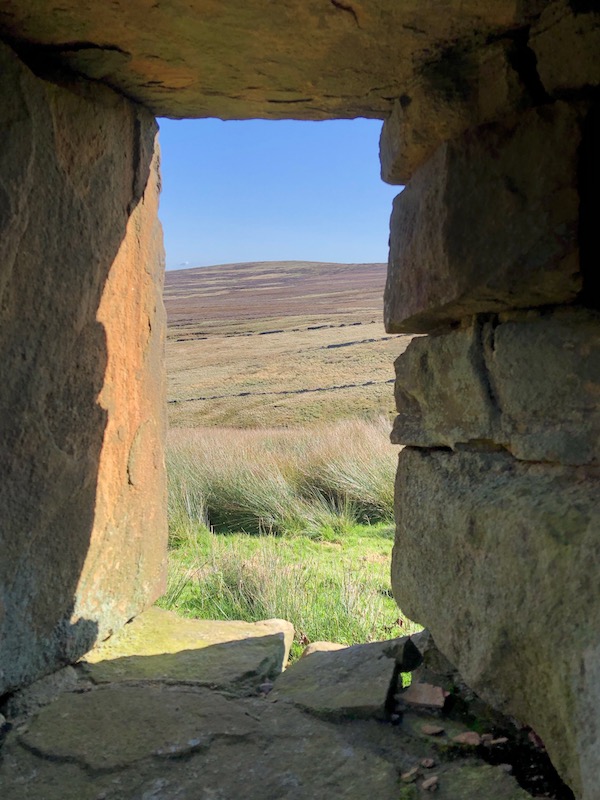
Above: Looking from inside the original walls of Topthens out to the moors.
After a lovely lunch at Top Withens, Clay and I head back down the trail toward Howarth to make the 4 pm “Brontë Bus” back to our apartment in Hebden Bridge. The day has been one of those “best days” that I will cherish always. To the sisters who I felt walking with us, thank you for sharing this special place.
**NOTE: This is the first of two posts on nature and the Brontë family. Coming up in Part Two – the role of the natural world in the art and writing of Charlotte, Emily, and Anne.
This week’s art: I admit to an obsession with drystone walls, and so this week I have two projects that incorporate the stone walls I saw in West Yorkshire – both in watercolor – from the Top Withens area. The first is the piece at the top of the page. The second, pictured here, is a 3” x 4” accordion book done on watercolor paper. On some of the wall stones, I added bits of phrases from Wuthering Heights.
